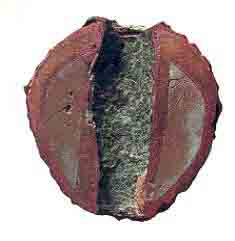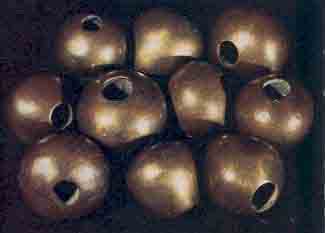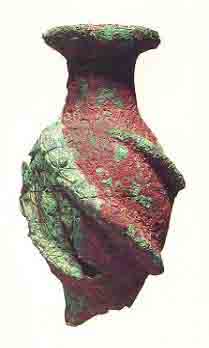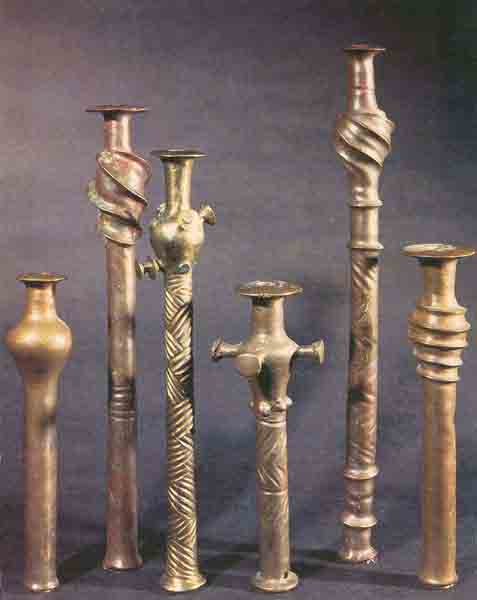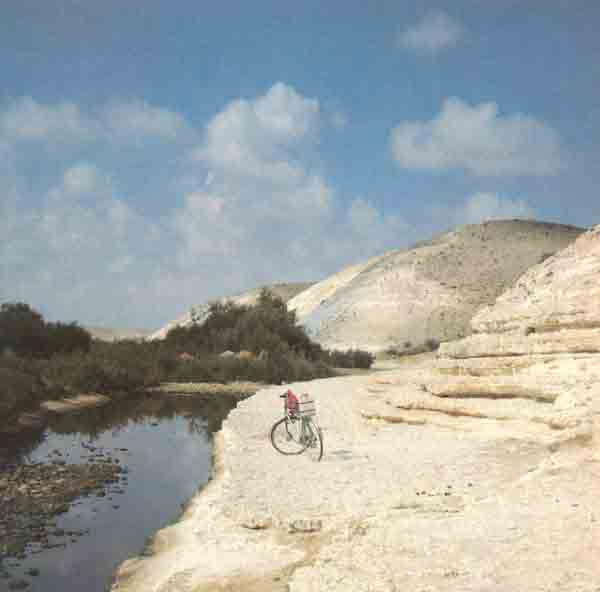
In Rivers in the Desert, the famous American archaeologist and rabbi Nelson Glueck reported the results of his archaeological site survey in the Negev Desert from 1952 to 1964. Glueck himself explains the allure that drew him to this work:
“A blank space on a historical map is a constant challenge to the explorer and archaeologist. Its emptiness disturbs him. What role, if any, did it play in the development of civilization? …
“Every area on the face of the earth, be it seemingly ever so waste and empty, has a story behind it which the inquisitive sooner or later will attempt to obtain.”1
Glueck visited over 1,500 sites, and most of his identifications are still accepted.2 He was a pioneer in archaeological survey work. Based on what we have learned during the past 30 years, however, it is easy to see gaps and blank areas on Glueck’s maps—places he never visited. Glueck paid scant attention to smaller sites and those located far away from the main drainage systems that transect the desert.
One such area is the northwestern Negev, which appears mostly blank on Glueck’s map of surveyed sites. Despite the extensive work in the Negev since Glueck conducted his survey, especially the excavation of such major tells as Arad, Beersheva and Jemma, the detailed picture of ancient settlement in this area still remained incomplete in the early 1970s, when I began an archaeological site survey of it for my doctoral dissertation at the University of Sheffield in England.
My concern—as was Glueck’s—was much broader than mere site identification. I wanted to learn how and why social complexity first developed in the arid lands of the Negev. The periods I would be studying were the Pottery Neolithic (c. 5500–4500 B.C.E.a), the Chalcolithic (c. 4500–3200 B.C.E.) and the Early Bronze Age I–II (3200–2650 B.C.E.). In the last of these periods we find the first fortified settlements in the history of Palestine. Could I trace the development that led to this? And what went before? In many respects, the economies that evolved during the late fifth and fourth millennia laid the foundation for those that appeared later in Bible lands.
The specific area I chose was the Nahal Beersheva-lower Nahal Besor drainage system. Nahal, incidentally, is Hebrew for a dry river bed or valley that flows at most a few times a year. In Arabic, the word is wadi. The two words are used interchangeably in Israel today. The area I designated for myself is about 70 miles long and covers the main wadi drainage system for the entire northern Negev. By focusing on one drainage system, I hoped to obtain a representative sample of the settlement processes that occurred at other major wadis as well.
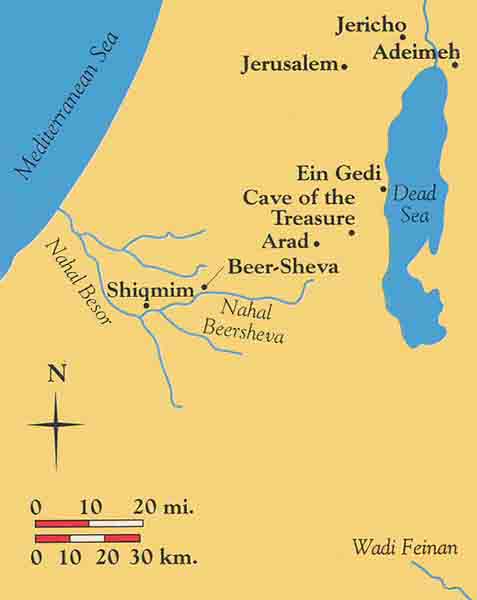
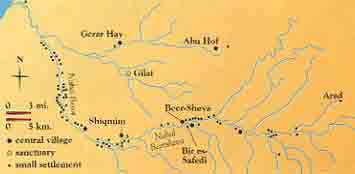
I included in the survey plan any area within two kilometers (1.2 miles) of the drainage system. In this way I would discover sites that may have been established away from the immediate vicinity of the wadi. This included a total area of 147 square miles (380 square kilometers) within two major geographic zones in the northern Negev: the Negev coastal plain and the inland foothill zone.
It soon became clear, however, that I had bitten off more than I could chew; it would be impossible for me to cover the entire study area. So I decided to employ a method of random sampling that had been recently developed among the so-called New Archaeologists of the early 1970s.3 I divided up the survey area according to elevations; that is, the areas between zero and 328 feet (100 meters) above sea level, between 328 and 656 feet (100 and 200 meters) above sea level, etc. This in effect divided the survey into different strata defined by elevation. Within each stratum, I randomly selected 20 one-square-kilometer squares covering a total of 5 percent of the stratum. In this way, I could obtain a rough idea about settlement trends without surveying every foot of the 147-square-mile (380-square-kilometer) study area.
When Glueck conducted his survey—he was then a mature scholar in his forties—he traveled in a jeep most of the time. That is how he covered such vast areas. He even had an armed escort, courtesy of the newly founded Israel Defense Forces.
With my limited funding I could not afford even a motorcycle, let alone a car. A camel was out of the question because it would take me too long to learn to ride it properly. In the end I decided on a bicycle, which served quite well on the hard-packed loess soil of the region.
Thus I began my exploration, systematically biking and walking across the landscape, looking for concentrations of broken pottery sherds, evidence of ashy soil (from an ancient fire), flint chips and tools and, if I was lucky, the eroded remains of portions of walls from ancient buildings protruding on the site surface.
During the first season, I investigated each of the 20 randomly selected, one-square-kilometer survey squares. This entailed riding into the desert with a topographic map in hand and several gallons of water strapped to my bike. I marked off the limits of the sample square and then systematically traversed the area ten times until it was completely covered. Most of the squares, except those in the Gaza Strip, were easily accessible.
Three sample squares west of Beer-Sheva, however, were quite remote. Each time I approached the area on my bicycle I was turned back by lack of water, rifle shots in the air or other nuisances. Finally, out of desperation, I decided to leave my bike in Beer-Sheva and take a bus to the development town of Ofakim, about 12 miles north of the targeted area. Accompanied by a student from Ben-Gurion University, in Beer-Sheva, I made camp near an old acacia tree outside the town one evening. At three o’clock in the morning we set off, walking with the aid of a compass and the full desert moon. About six o’clock, as the sun rose over the brown loess hills, we reached the north bank of the Nahal Beersheva and were ready to start our survey in search of the first random square. As we walked east, with the sun glaring in our eyes, we saw looming up in front of us what looked to be a jewel-studded carpet, a huge archaeological site spreading out for hundreds of feet on the north bank of the wadi. The sparkle was caused by thousands of flint flakes and tools that were lying on the surface of the site. On closer inspection, we found hundreds of large pottery sherds from beautifully painted pots, incense burners, basins and bowls. Long walls, some of them over 30 feet long, protruded from the ground. To a young graduate student, it was as if I had found the Chalcolithic nirvana. Here, in a pristine state, waiting to be investigated, was one of the largest Chalcolithic village settlements in the northern Negev. We called the site Shiqmim.b
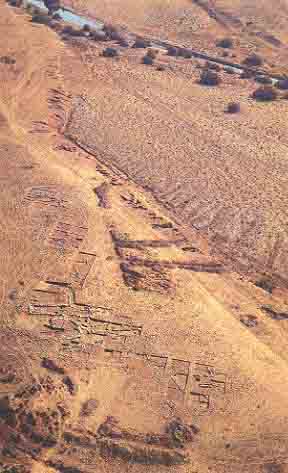
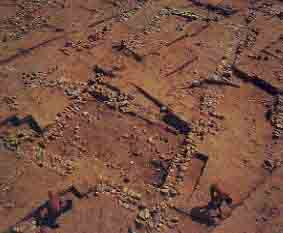
At the end of the first year of the survey, a rough picture of settlement patterns began to emerge. On the lower Besor, in the Negev coastal plain, we found Late Neolithic sites characterized by crude pottery with straw inclusions in the matrix. Inland, along the Nahal Beersheva, we found a number of Chalcolithic village sites, along with very few Early Bronze Age sites. It was clear, however, that to obtain a more reliable picture of settlement processes, we would need to do more extensive, time-consuming work.
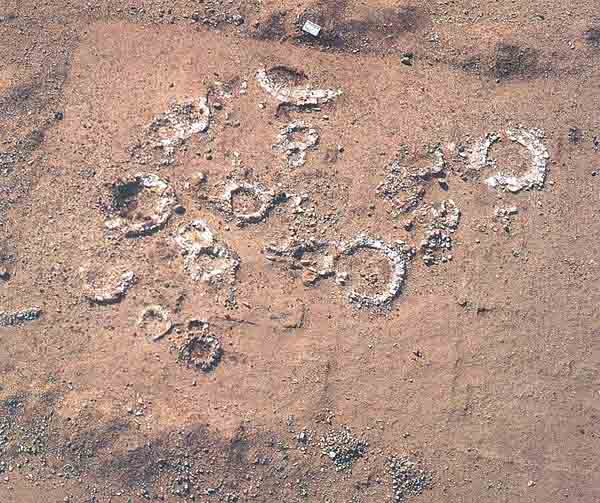
After the first year, I raised enough money—$450—to buy an old Fiat van in Sheffield. When I showed it to my university colleagues and told them of my plan to drive it to Beer-Sheva, Israel, they simply laughed. But to everyone’s amazement, the rusty old thing made it over the Alps, through the Vardar Valley of Yugoslavia, on to Greece, and finally by boat to Haifa. From there, it was a hop, skip and a jump to Beer-Sheva. With my van I could take a group of five students (Israeli and British) with me each day. We systematically combed each site along the wadis by spreading out at 109-yard (100-meter) intervals. By working in this way for two more seasons, we were able to cover virtually every site within 545 yards (500 meters) on each side of the Nahal Beersheva.
During this survey I began collaborating more and more with David Alon,4 a kibbutznik who fought with the Haganah in defense of the northern Negev kibbutzim during Israel’s 1948 War of Independence.c After the war, Alon conducted an archaeological survey of the area on foot and later become an inspector for the Israel Department of Antiquities. Alon’s intimate knowledge of the northern Negev was invaluable, and he welcomed the opportunity to resume surveying the Nahal Beersheva-lower Nahal Besor.
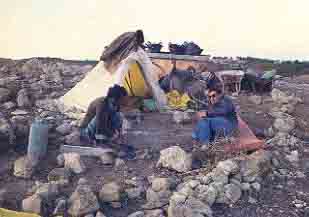
By the end of our survey, we recorded 11 Pottery Neolithic sites (c. 5500–4500 B.C.E.), 57 Chalcolithic sites (c. 4500–3200 B.C.E.) and eight Early Bronze Age sites (c. 3200–2650 B.C.E.).5
All of the sites from the earliest period (the Pottery Neolithic), were clustered on the Negev coastal plain, close to fresh-water springs. These settlements functioned as small, autonomous villages with limited relationships to one another. The inhabitants of these villages were farmers who utilized the water-retentive soil around the springs to practice what archaeologists refer to as fixed-plot agriculture. The animal bones indicate that these people also raised sheep and goats, primarily for meat.
Most Neolithic farming communities in ancient Palestine, such as Jericho, are located in similar environmental settings. We did not find a single Pottery Neolithic site in the more arid inland valleys of the northern Negev.
In the Chalcolithic period, there was a population explosion in the Negev. This happened several more times in the history of the Negev—in Iron Age II (c. 1000–586 B.C.E.), in the Byzantine period (fourth to seventh centuries C.E.) and again in the 20th century. But the Chalcolithic population explosion in the Negev was the first. It is part of the archaeologist/historian’s task to explain why.
In the Chalcolithic period, settlement expanded eastward into the more arid zone along the Nahal Beersheva drainage system. Some of these settlements are large villages of over 20 acres.
To try to understand the reason for this expansion, I began—as a post-doctoral projectd—a more intensive study of the Chalcolithic site of Shiqmim, whose sparkling flint, on our first visit, had signaled the presence of the large site. I have now been working on this project for over ten years, exploring the early settlement history of this impressive village and striving to understand why the area was almost abandoned in the Early Bronze Age.
To help find the answers, a number of specialists have joined our research team. Shiqmim, like the other Chalcolithic villages in the Beer-Sheva valley, is located adjacent to the main wadi, on natural geological terraces that run parallel to the seasonal stream. One of our specialists, Professor Paul Goldberg,6 a geologist from the Hebrew University of Jerusalem, found in the wadi channel a thick gravel layer that dated to the early Chalcolithic period; this suggested a moister environment than exists today. The gravel layer, over 3 feet thick, was topped by a silty, sandy sediment that had been deposited on the valley floor. It was an ideal soil for cultivation. So, part of the reason for the population explosion in the Chalcolithic period may have been environmental.
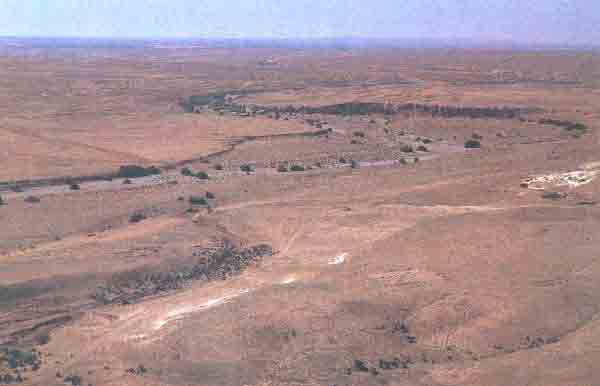
Another one of our experts, Dr. Arlene Rosen,7 of the Israel Archaeological Survey in Jerusalem, studied the fossil silica evidence (phytoliths) in the Chalcolithic village and found remains of wheat and barley that had been grown under flooded or irrigated conditions. In our survey, Alon and I had found evidence of terrace wall systems built during the Chalcolithic period, the earliest terrace walls in the Negev. Putting the evidence together—the gravel layer, the carbonized grain and the terrace walls—we can reconstruct a Chalcolithic floodwater farming system, whose water was supplied, in Glueck’s famous phrase, by “rivers in the desert.” Crops were grown in the areas watered by the floods.
Climatic conditions were somewhat moister in the fourth millennium B.C.E.—about 11 inches of rainfall per year, versus 7 inches today. Even this, however, was not enough for dry-farming; to insure adequate crop yields for the large village populations at Shiqmim and other sites, the villagers planted their barley, wheat and possibly fruit trees on the valley floor and on terraces that could retain annual rainfall supplemented with seasonal floodwaters.
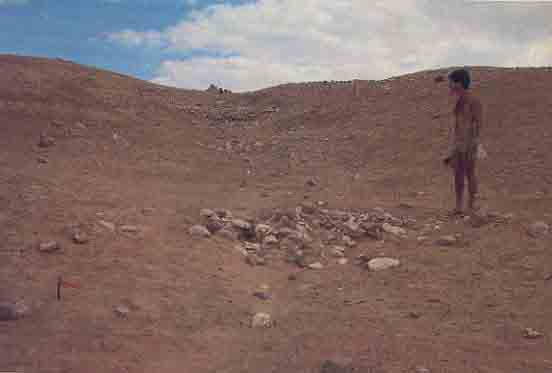
In the Pottery Neolithic period, farmers using stone hoes intensively cultivated fixed plots around natural springs. But this fixed-plot farming method in the spring zone of the Negev could not support the increasing population of the Chalcolithic period. As so often happens, necessity proved to be the mother of invention. The Chalcolithic farmers invented both floodwater farming and a new type of settlement pattern along the inland wadis. In addition, they developed a number of new tools, although these tools all point to the continuation of a hoe-based system of cultivation. At Shiqmim, as at other sites, we found scores of bifacial stone tools—hoes, axes, adzes and chisels that were chipped from flint cobbles, the rolled and rounded stones found in the Negev wadi channels.
Social organization also changed in the Chalcolithic period. In contrast to Late Neolithic culture, where we find autonomous village sites, in the Chalcolithic we see the development of a clear two-tier hierarchy of settlements: a large settlement center surrounded by smaller satellite villages. This change in settlement pattern represents the clearest evidence for the emergence of a more complex social organization, which anthropologists characterize as a “chiefdom.”
The symbols of rank and ritual are reflected in the emergence of craft specialization in the Chalcolithic culture. The production, trade and exchange of a wide range of exotic objects, particularly those made of copper, came to the fore during this formative period. See, for example, the fantastic Chalcolithic finds from the so-called Cave of the Treasure.
In the Early Bronze Age, we see another shift. The people move away from the “rivers in the desert,” the Nahal Beersheva-lower Nahal Besor drainage system. Although it had flourished in the Chalcolithic period with numerous villages, the Nahal Beersheva was abandoned except at a few sites such as the small village at Tel Malhata and a few even smaller settlements. Then, for the first time, we find a huge fortified town—Arad (about 25 acres)—situated in the even more arid eastern portion of the Negev. Here, Nahal Beersheva is just an insignificant, dry creek less than 6 feet wide.
How then were the farmers of Arad able to provide the large quantities of grain needed for all the people living behind Tel Arad’s impressive defense wall with its intermittent towers? The answer is deceptively simple: The plow had been introduced into ancient Palestine.
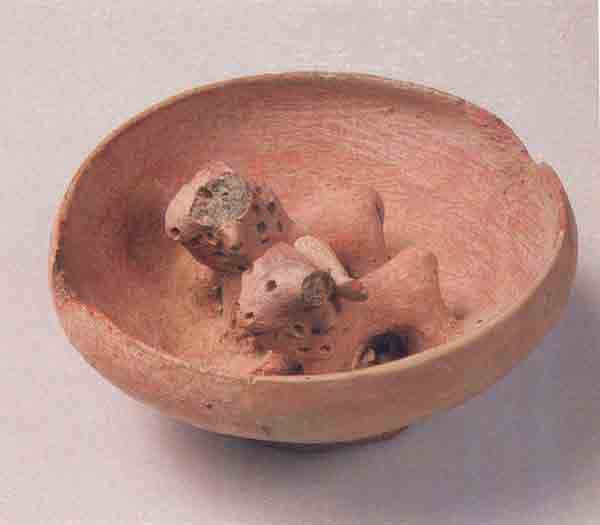
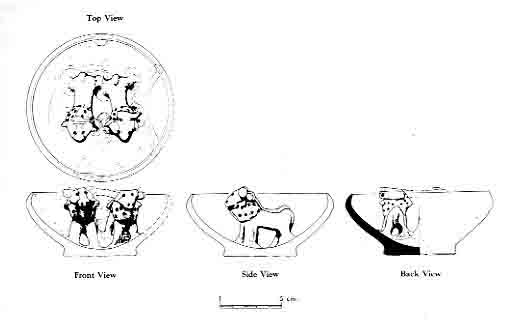
In order to exploit the soils in areas not adjacent to stream valleys—so-called interfluve areas—Early Bronze Age farmers had to shift from the intensive farming systems used in the Neolithic and Chalcolithic periods to an extensive system. This they were able to do with shallow plowing (3.94.7 inches).e The plow, drawn by an ox or donkey, enabled them to cultivate vast tracts of land. Charles Redman and Andrew Sherratt8 suggest that the plow was invented in the early fourth millennium B.C.E. somewhere in northern Mesopotamia. From there, over the next 500 years, it spread throughout the Near East, finally arriving in northeastern Europe. In Palestine, it is doubtful that the plow appeared on any significant scale before the Early Bronze Age. With the help of the plow to cultivate vast tracts of land Early Bronze Age farmers had a better chance of success; their crops could be spread out over a larger area to take advantage of the intermittent rainfall that characterizes the northern Negev. At the same time, plowing creates a microtopography that keeps runoff to a minimum while ensuring maximum infiltration. Dry farming technology, which the plow made possible in semiarid zones, is still used by peasant farmers in the Near East today.
Another important change in the Early Bronze Age involved the emergence of specialized pastoralism. During the Neolithic period, sheep and goats were raised primarily for meat. However, by the Chalcolithic period the kill-off patterns of sheep and goats, observed by animal-bone analysis of their remains, show that males were slaughtered at a young age and females were kept to an older age, evidence of their exploitation for wool and milk. This new method of exploiting herd animals represents a fundamental economic change. Sherratt has called this Chalcolithic innovation the “secondary products revolution”9—the systematic exploitation of herd animals for their milk and wool. This secondary products revolution, which began in the Chalcolithic period, required new organizational skills (especially skills applied to the organization of herding and grazing strategies). In short, the secondary-products revolution gave rise to a system of transhumant (seminomadic) animal husbandry in the Chalcolithic period that would continue to characterize later cultures in Palestine during the Early Bronze, Middle Bronze and Iron Age, and even into the Byzantine period and later. Indeed, transhumant animal husbandry is still practiced by the Bedouin herders of Israel and Jordan.
The evolution of herding practices is not easy to trace. In the small Neolithic settlements on the Negev coastal plain, year-round grazing land was available around the springs. With the establishment of permanent Chalcolithic villages in the more arid areas to the east, herd animals had to be moved, an annual shift based on the availability of pasture land. To facilitate this movement of herds during the dry season, specialized groups of herders were needed to guide the animals on their search for pasture. Thus, the bulk of the population could remain in the villages along the Nahal Beersheva, while the herders moved about. In our survey, we found the remains of a number of specialized, temporary pastoral camps.10
Another factor encouraged the development of specialized herders to take care of the migrating flocks: On the valley floor, the extensive fields of barley and wheat associated with the Chalcolithic villages would be prime targets of the sheep and goats if they were left near the villages. It was imperative to keep the village herds away from the fields. This is an additional reason why specialized herders were needed to take care of and guide the animals.
Adding the archaeological data to the survey data enables us to make a strong case for our contention that we have found here in the Chalcolithic period the beginnings of transhumant pastoralism in our region.
In a sense, the Chalcolithic population explosion really depended on harnessing those “rivers in the desert.” This permitted, first, floodwater farming on the wadi floor and, next, the development of a village system with smaller village satellites. Then came specialized pastoralism, in which herds are raised for milk and wool, and specialized herders, to travel with the flocks on an annual cycle. But it all seems to have begun with those floodwaters.
At the close of our 1987 excavation at Shiqmim, the strongest flood in 25 years swept through the Nahal Beersheva. For ten years, I had seen floods almost every year, but none like this one. When the wadi was still a small trickle of water, four of our students from Spain went unsupervised into the drainage area; 20 minutes later they were stranded on a sandbar between two braids of stream. Our driver Ibrahim al-Asam, six volunteers and I took a rope and went into the flow to rescue them. Ibrahim and I were the last to return to the wadi bank; both of us were nearly swept away by the torrent. From a small trickle, the stream had grown to a massive river over 650 feet wide and 12 feet deep.
Back under the tent of our excavation camp on a hill above the wadi, we recalled the words of Psalm 126, which now held new meaning for us:
“Yahweh restored our fortunes like torrents in the Negev.”
MLA Citation
Footnotes
B.C.E. (Before the Common Era) and C.E. (Common Era) are the scholarly alternate designations corresponding to B.C. and A.D.
As I later learned, David Alon had visited the site around 1950. He called it Geomaise, which in Arabic means sycamore. This was the name the local Bedouin had given to an old Turkish well located about one half mile upstream from the site. Although there are no sycamore trees in the immediate vicinity of the site, one lone sycamore still thrives near the Geomaise well. We decided to retain the name Alon had given to the site, but translated into Hebrew—thus Shiqmim (sycamores).
The Haganah was the underground self-defense organization of Jews formed in Palestine in 1920, during Ottoman rule; it continued to operate during British rule until, when the state of Israel was created in 1948, it became the regular army of Israel.
Since 1987, this project has been sponsored by the Hebrew Union College-Jewish Institute of Religion and the Israel Antiquities Authority (formerly called the Israel Department of Antiquities), and supported by grants from the United States National Endowment for the Humanities, the National Geographic Society and the C. Paul Johnson Charitable Foundation. The excavation is affiliated with the American Schools of Oriental Research.
Endnotes
Philip J. King, American Archaeology in the Mideast—A History of the American Schools of Oriental Research (Philadelphia: American Schools of Oriental Research, 1987), p. 97.
W. James Judge, James I. Ebert and Robert K. Hitchcock, “Sampling in Regional Archaeological Survey,” in Sampling in Archaeology, ed. James W. Mueller (Tucson: Univ. of Arizona Press, 1975), pp. 82–123. Surveys had been conducted in the region by Eann Macdonald, David Alon, Dan Gazit, Rudolph Cohen, Ram Gophna Yohanan Aharoni and others prior to the mid-1970s.
David Alon and Thomas E. Levy, “Preliminary Note on the Distribution of Chalcolithic Sites on the Wadi Beersheva and Lower Wadi Besor Drainage System,” Israel Exploratzon Journal 30 (1980) pp. 140–147; Levy and Alon, “Chalcolithic Settlement Patterns in the Northem Negev Desert,” Current Anthropology 24 (1983), pp. 105–107.
Levy and Alon, “Settlement Pattems Along the Nahal Beersheva-Lower Nahal Besor: Models of Subsistence in the Northem Negev,” in Shiqmim I, ed. Levy, Intemational Series 356 (Oxford: British Archaeological Reports, 1987), pp. 45–138.
Charles L. Redman, The Rise of Civilization—From Early Farmers to Urban Society in the Ancient Near East (San Francisco: W.H. Freeman, 1978), p. 268; Andrew Sherratt, “Plough and Pastoralism: Aspects of the Secondary Products Revolution,” in Patterns of the Past: Studies in Honour of David Clarke, ed. Ian Hodder, Glenn Isaac and Normand Hammond (Cambridge, UK Cambridge Univ. Press, 1981), pp. 261–305.
Sheratt, “Plough and Pastoralism The Secondary Exploitation of Animals in the Old World,” World Archaeology 15 (1983), pp. 90–104.


